Lot details By Tomiki Isuke I (Art name Munekazu, 1853-1894), signed Munekazu Japan, c. 1860-1880 Ingeniously constructed from well over 100 separately cast and hammered iron components, depicting the 206 human bones in a scale of 1:4 precisely, altogether meticulously jointed to present a fully articulated skeleton of unique anatomical accuracy, the skull furthermore finely incised in every detail including the fontanelle and with a hinged jaw opening to reveal a remarkably detailed interior. The signature MUNEKAZU is neatly incised on a rectangular silver plaque inlaid to back of pelvis. HEIGHT 38.5 cm WEIGHT 820.7 g Condition: One arm has been replaced, otherwise in superb condition with a fine, naturally grown patina overall, some old wear and traces of use, presents exceptionally well. Provenance: An old private estate in Philadelphia, USA. A British private collector, acquired from the above. Exhibited by Kevin Page Oriental Art at the 2019 LAPADA Art & Antiques Fair in London, United Kingdom, winner of the LAPADA Legends award in the Sculpture category. With a fitted metal-mounted plexiglass stand. Jizai okimono, known as Ingenious movable sculptures are the invention of Japanese metalsmiths trained in the manufacture of samurai armor. The Myochin family of armorers is credited with the first sculptures of this type in the eighteenth century. In relative peacetime, the demand for arms and armor, except for display purposes, had slowed. To meet the changes in demand, the Myochin expanded their repertoire into metalwork of a decorative and symbolic nature. Some see these articulated models as the culmination of the armorer’s skill and imagination. Known as jizai okimono, (lit. ‘free decorative object’), these intricate sculptures are a unique genre of Japanese sculptural art. Popular subjects for jizai okimono included insects, fish, crustaceans, snakes, and even dragons. The present skeleton, however, is not only an outstanding example of such objects, but also the only known example of its kind. It was made by Tomiki Isuke I (1853-1894), who used the art name Munekazu and is sometimes called ‘Myochin Munekazu’, although his affiliation with the Myochin school remains unclear. At his studio in Kyoto he tutored Takase Kozan (1869-1934) and Muneyoshi (Tanaka Tadayoshi; ?-1958). Although clearly working in the Myochin style, visible in the exceptional quality of his jizai okimono, the artist also enjoyed some independence from the school, allowing him to create unique sculptures such as the present lot, during the second half of his career. Auction comparison: Compare an iron jizai okimono of a snake by Muneyoshi (Tanaka Tadayoshi, d. 1958), a student of Munekazu, 162.9 cm long, at Christie’s, 18 April 2018, New York, lot 111 (sold for 250,000 USD). Compare also an iron jizai okimono of an eagle by Itao Shinjiro (1842-1911), another artist who worked independently from the Myochin school, at Christie’s, 27 November 2018, Hong Kong, lot 3825 (sold for 6,700,000 HKD). Note that while these are some of the highest results achieved for mid-to-late 19th-century jizai okimono, neither the snake nor the eagle are unique, unlike the present skeleton. Memento mori (Latin for 'remember that you die') is an artistic or symbolic trope acting as a reminder of the inevitability of death. The concept has its roots in the philosophers of classical antiquity and appeared in art and architecture from the medieval period onwards. The most common motif is a skull, often accompanied by one or more bones, or a complete skeleton. Often this alone is enough to evoke the trope, but sometimes other motifs such as a coffin, hourglass and wilting flowers were added to signify the impermanence of human life. From Leonardo to Basquiat, the most important artists of the modern world were fascinated by the Memento Mori trope. The same applies to the talented artist of the present lot Tomiki Isuke I (1853-1894) who like other Japanese artists drew influenc
Lot details By Tomiki Isuke I (Art name Munekazu, 1853-1894), signed Munekazu Japan, c. 1860-1880 Ingeniously constructed from well over 100 separately cast and hammered iron components, depicting the 206 human bones in a scale of 1:4 precisely, altogether meticulously jointed to present a fully articulated skeleton of unique anatomical accuracy, the skull furthermore finely incised in every detail including the fontanelle and with a hinged jaw opening to reveal a remarkably detailed interior. The signature MUNEKAZU is neatly incised on a rectangular silver plaque inlaid to back of pelvis. HEIGHT 38.5 cm WEIGHT 820.7 g Condition: One arm has been replaced, otherwise in superb condition with a fine, naturally grown patina overall, some old wear and traces of use, presents exceptionally well. Provenance: An old private estate in Philadelphia, USA. A British private collector, acquired from the above. Exhibited by Kevin Page Oriental Art at the 2019 LAPADA Art & Antiques Fair in London, United Kingdom, winner of the LAPADA Legends award in the Sculpture category. With a fitted metal-mounted plexiglass stand. Jizai okimono, known as Ingenious movable sculptures are the invention of Japanese metalsmiths trained in the manufacture of samurai armor. The Myochin family of armorers is credited with the first sculptures of this type in the eighteenth century. In relative peacetime, the demand for arms and armor, except for display purposes, had slowed. To meet the changes in demand, the Myochin expanded their repertoire into metalwork of a decorative and symbolic nature. Some see these articulated models as the culmination of the armorer’s skill and imagination. Known as jizai okimono, (lit. ‘free decorative object’), these intricate sculptures are a unique genre of Japanese sculptural art. Popular subjects for jizai okimono included insects, fish, crustaceans, snakes, and even dragons. The present skeleton, however, is not only an outstanding example of such objects, but also the only known example of its kind. It was made by Tomiki Isuke I (1853-1894), who used the art name Munekazu and is sometimes called ‘Myochin Munekazu’, although his affiliation with the Myochin school remains unclear. At his studio in Kyoto he tutored Takase Kozan (1869-1934) and Muneyoshi (Tanaka Tadayoshi; ?-1958). Although clearly working in the Myochin style, visible in the exceptional quality of his jizai okimono, the artist also enjoyed some independence from the school, allowing him to create unique sculptures such as the present lot, during the second half of his career. Auction comparison: Compare an iron jizai okimono of a snake by Muneyoshi (Tanaka Tadayoshi, d. 1958), a student of Munekazu, 162.9 cm long, at Christie’s, 18 April 2018, New York, lot 111 (sold for 250,000 USD). Compare also an iron jizai okimono of an eagle by Itao Shinjiro (1842-1911), another artist who worked independently from the Myochin school, at Christie’s, 27 November 2018, Hong Kong, lot 3825 (sold for 6,700,000 HKD). Note that while these are some of the highest results achieved for mid-to-late 19th-century jizai okimono, neither the snake nor the eagle are unique, unlike the present skeleton. Memento mori (Latin for 'remember that you die') is an artistic or symbolic trope acting as a reminder of the inevitability of death. The concept has its roots in the philosophers of classical antiquity and appeared in art and architecture from the medieval period onwards. The most common motif is a skull, often accompanied by one or more bones, or a complete skeleton. Often this alone is enough to evoke the trope, but sometimes other motifs such as a coffin, hourglass and wilting flowers were added to signify the impermanence of human life. From Leonardo to Basquiat, the most important artists of the modern world were fascinated by the Memento Mori trope. The same applies to the talented artist of the present lot Tomiki Isuke I (1853-1894) who like other Japanese artists drew influenc


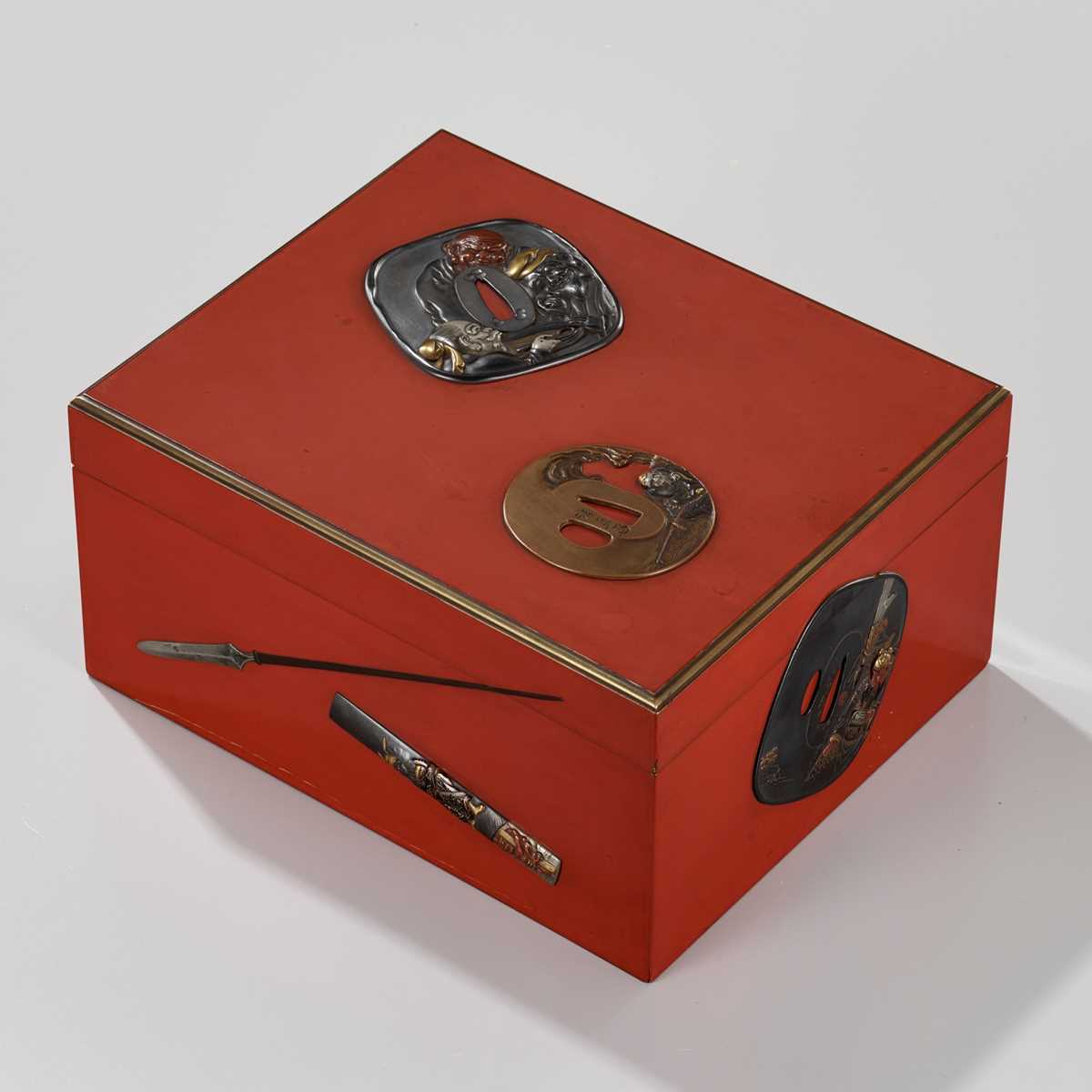
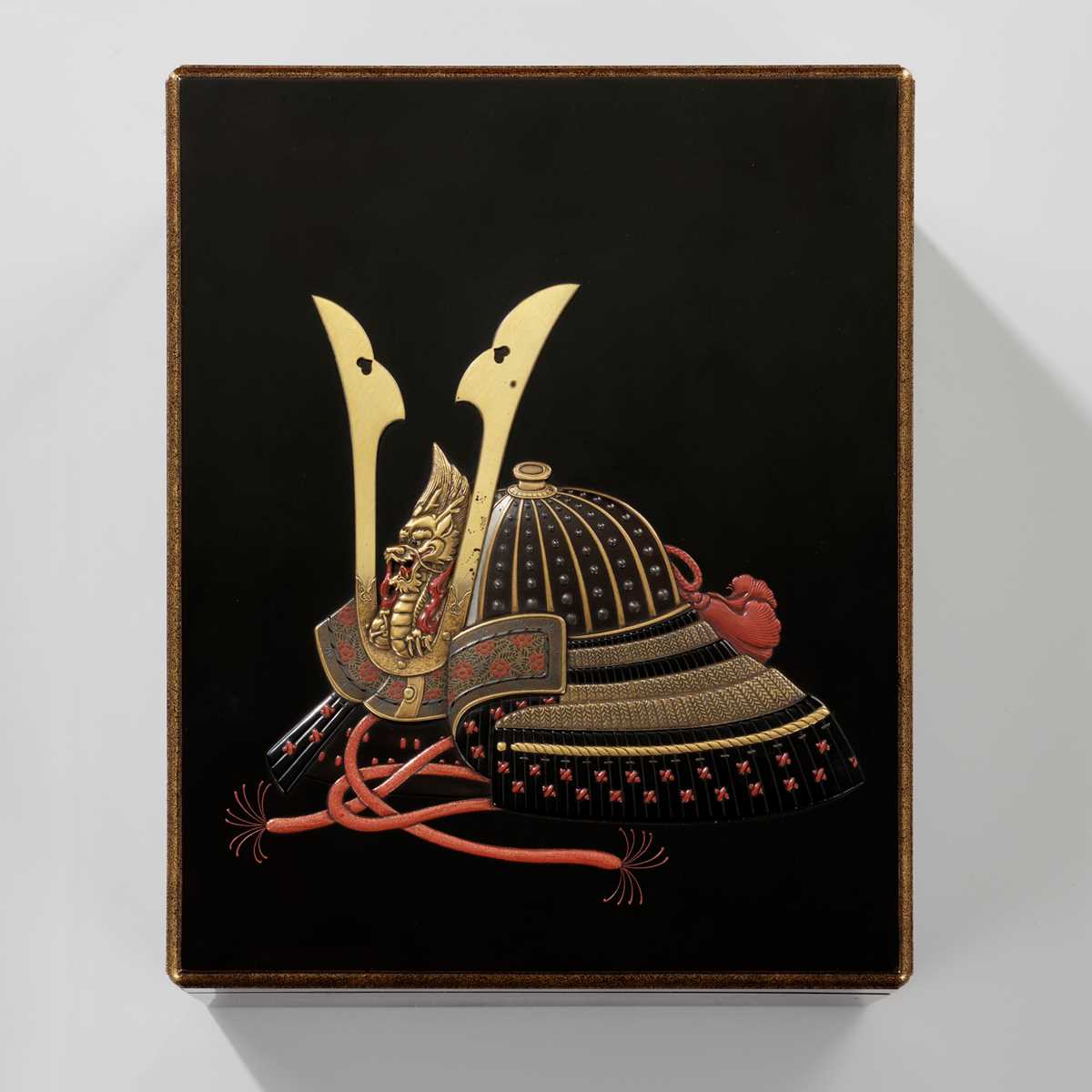
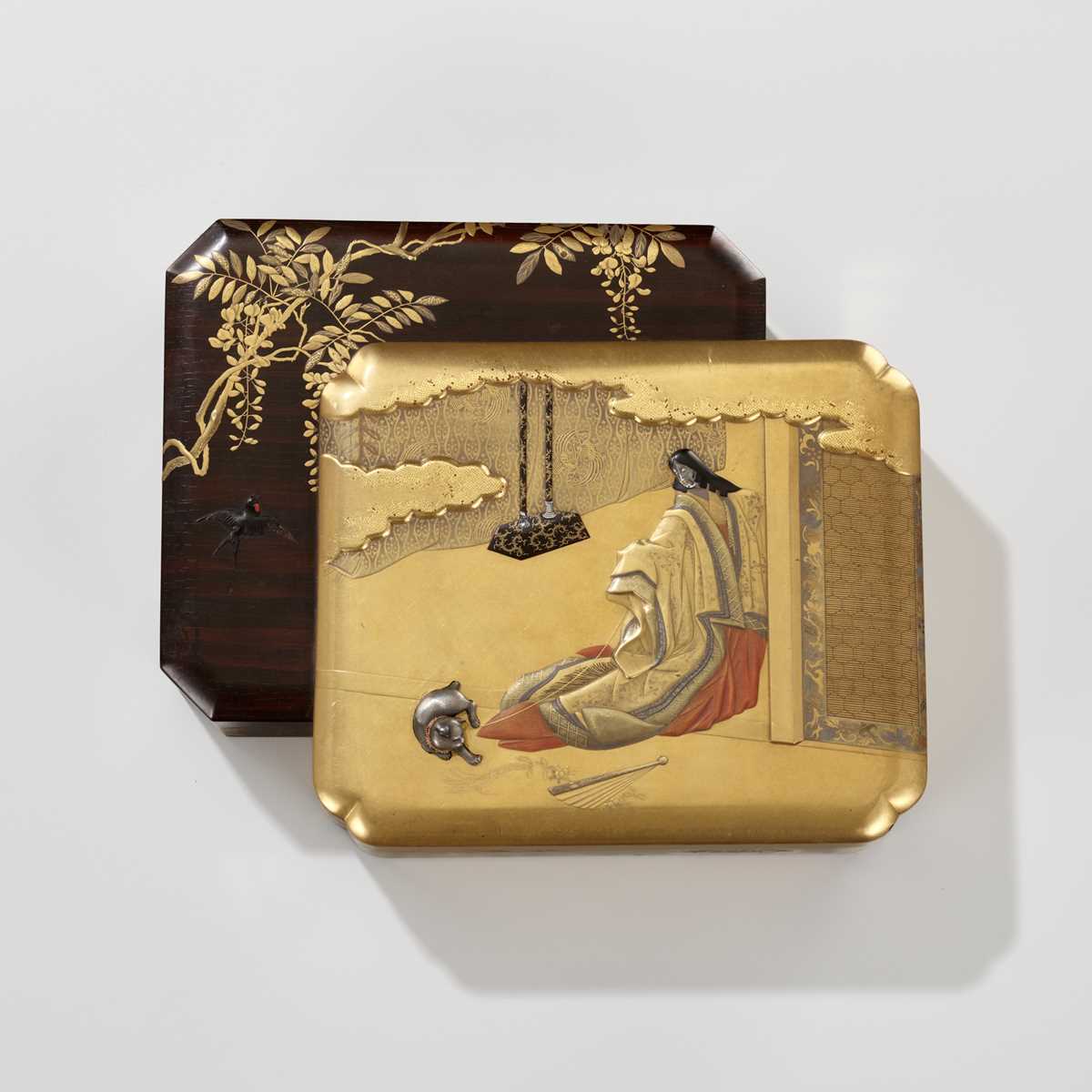

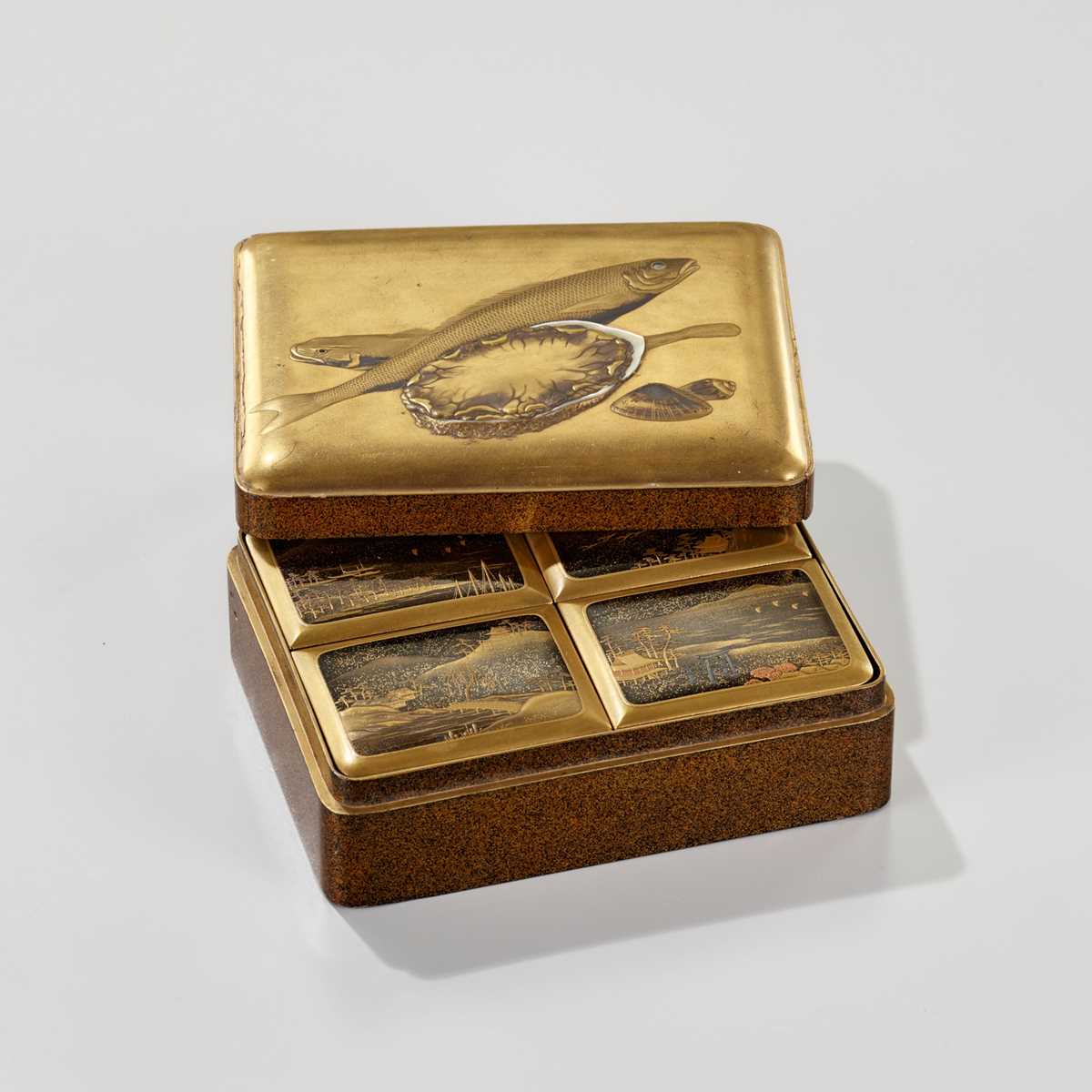


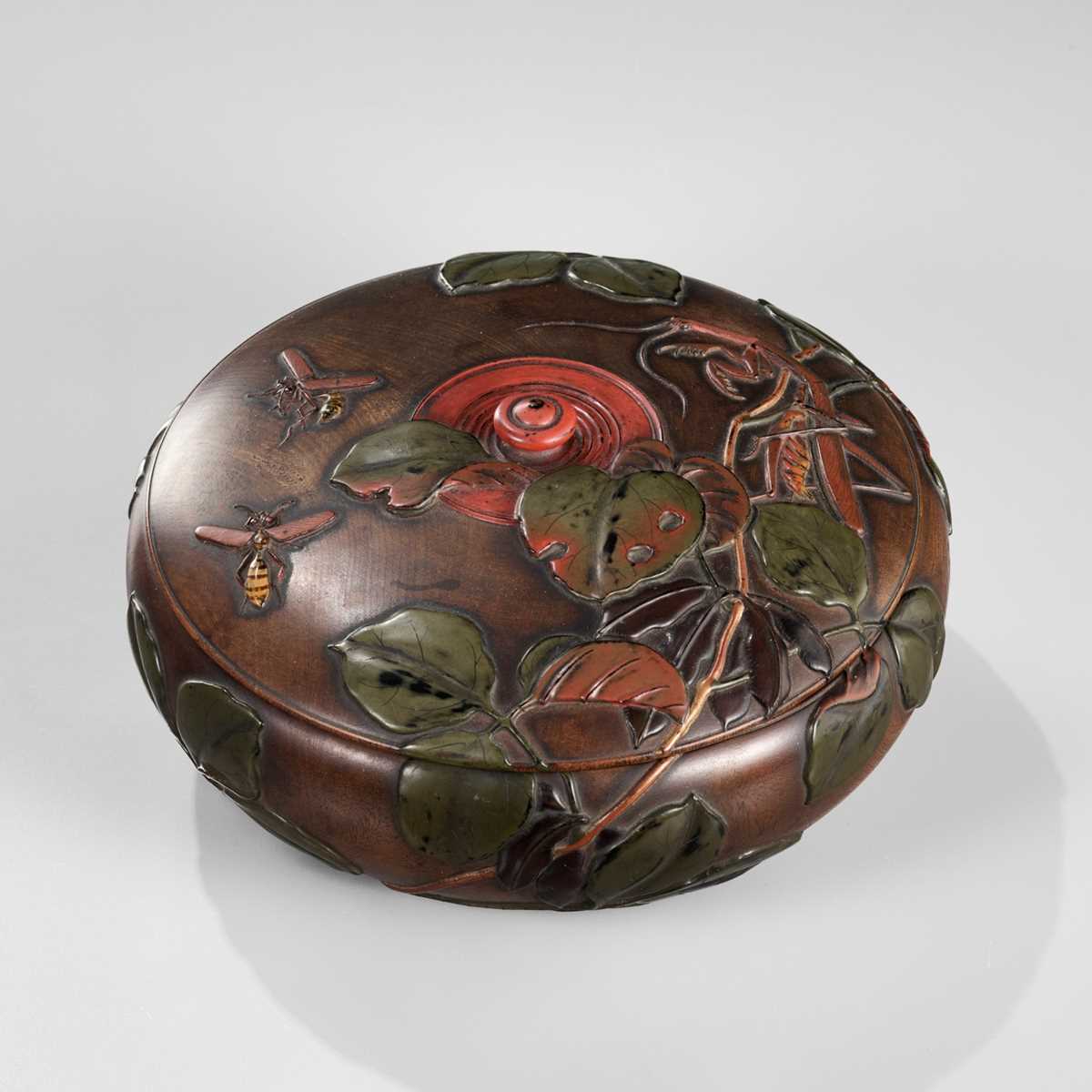

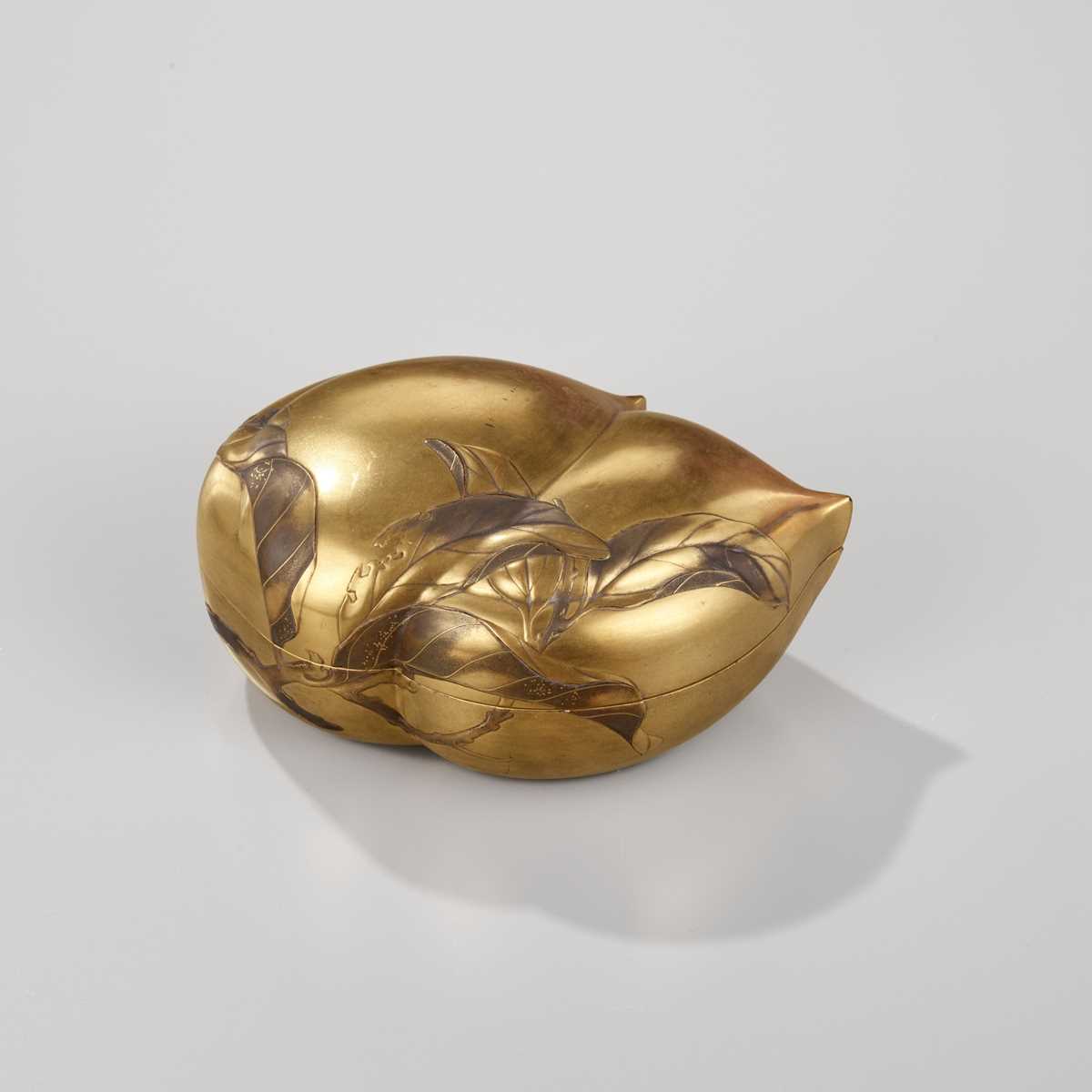

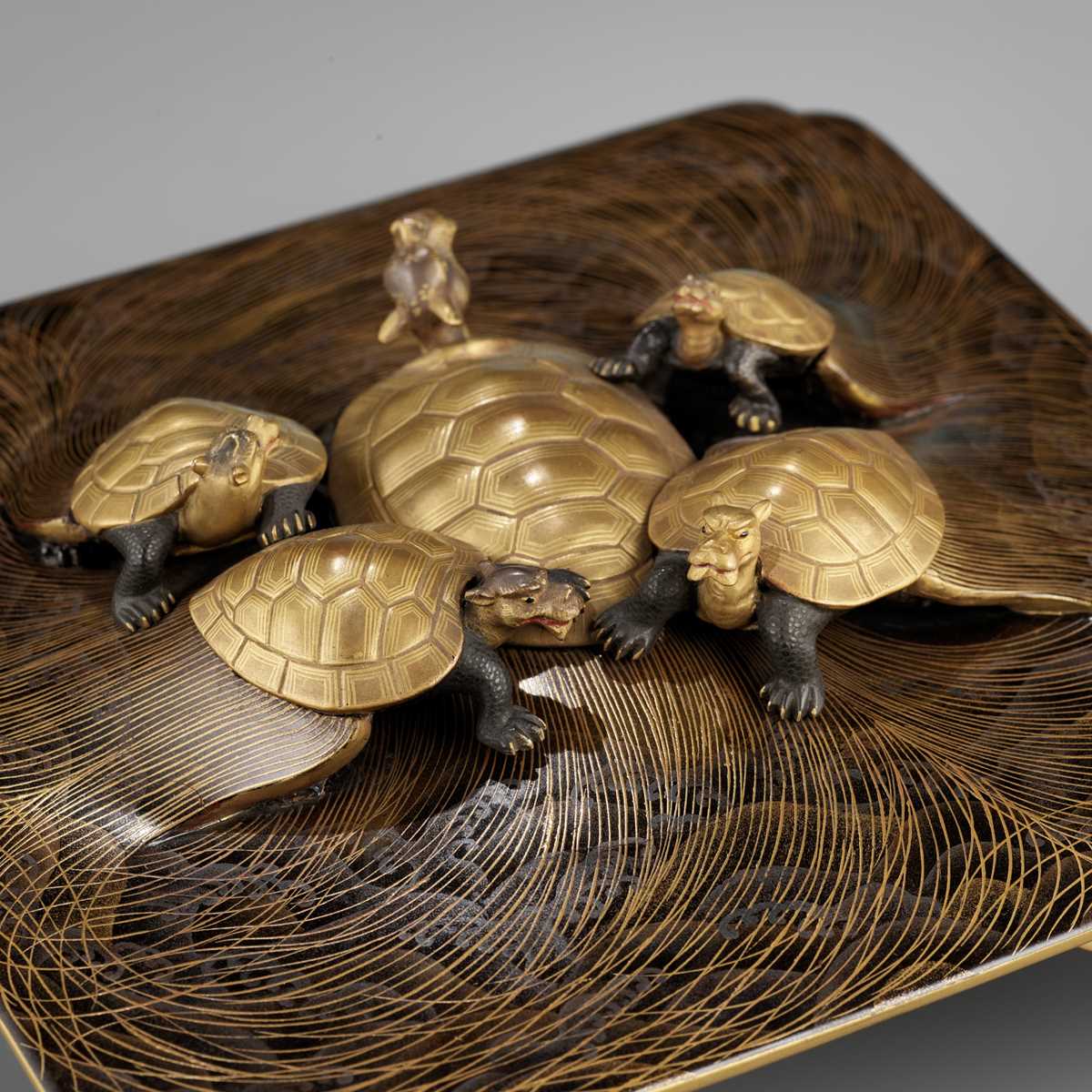
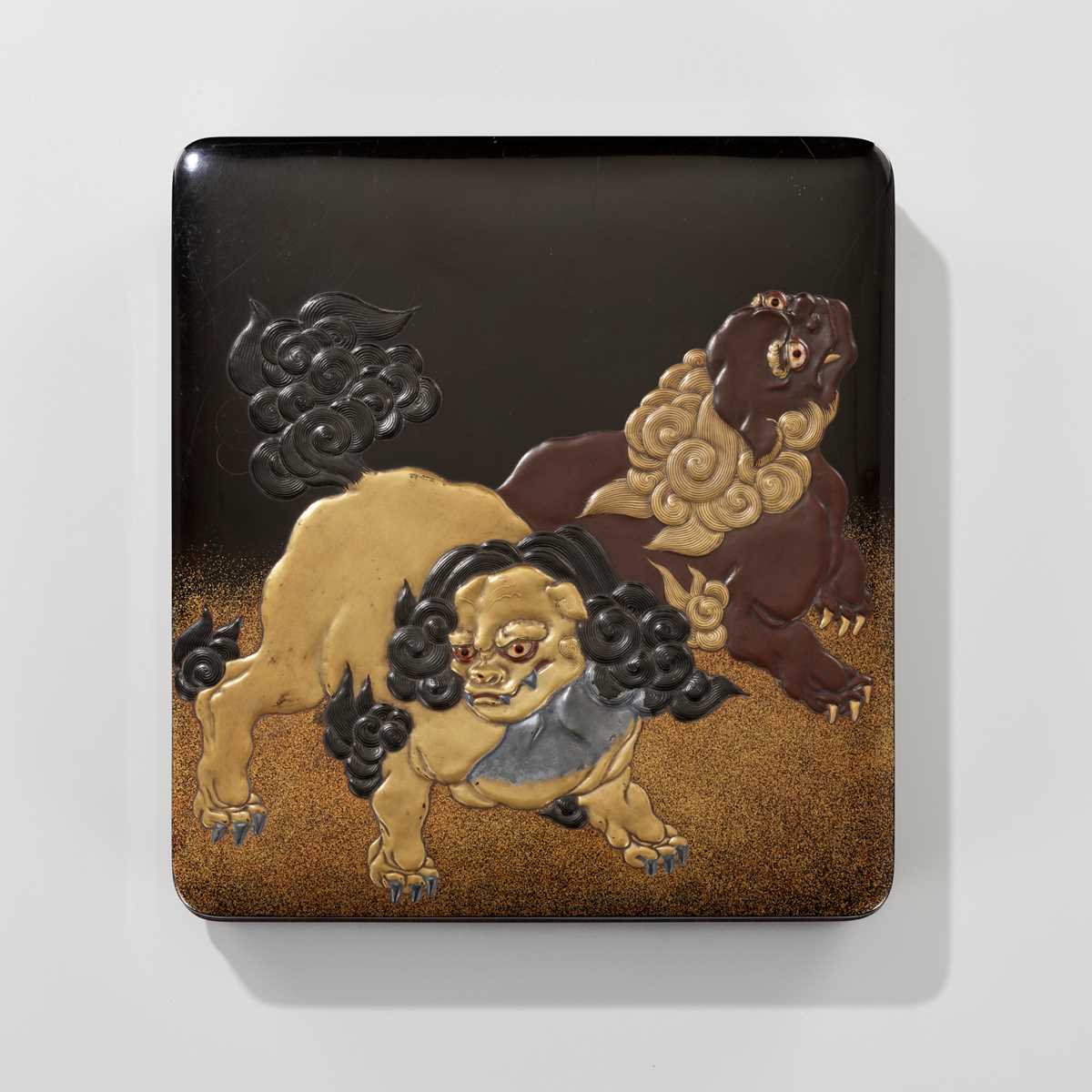
Testen Sie LotSearch und seine Premium-Features 7 Tage - ohne Kosten!
Lassen Sie sich automatisch über neue Objekte in kommenden Auktionen benachrichtigen.
Suchauftrag anlegen